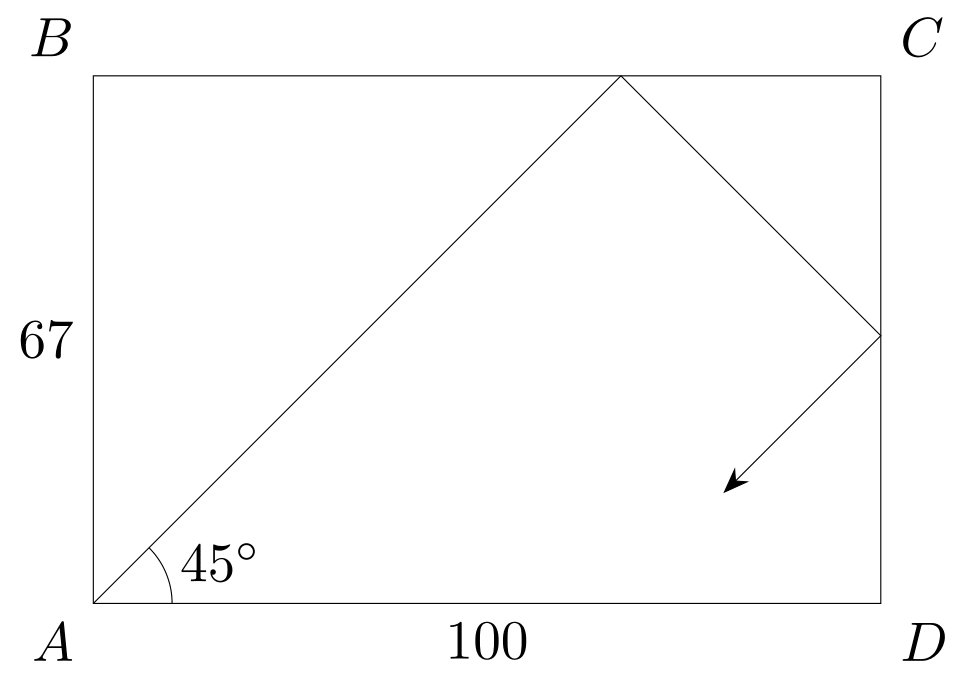Which Pocket Will It End Up In?

If you shoot a billiard ball as shown in the diagram, which pocket will the ball end up in?
Assume the ball only lands in a pocket if the center of the ball meets the corner of the pocket exactly.
Model the ball as a point mass.
This section requires Javascript.
You are seeing this because something didn't load right. We suggest you, (a) try
refreshing the page, (b) enabling javascript if it is disabled on your browser and,
finally, (c)
loading the
non-javascript version of this page
. We're sorry about the hassle.
We very well know of reflection property. Now what you have thought is that whenever ball strikes any mirror than it (apparently) enters into a rectangle which is just mirror image of it.
Now just keep on constructing rectangles with taking common sides C D and B C (initially) then their reflections too. now remember one thing that the ball will keep on moving in its direction until it reaches one of the vertices of our apparent rectangles. and hence it is obvious that the no. of such apparent rectangles that you will need in the horizontal direction will be 67 and in the vertical direction is 100 (smallest possible). being 67 odd hence, it is obvious that it will fall either in C or D and 100 being even it will eventually fall into D .